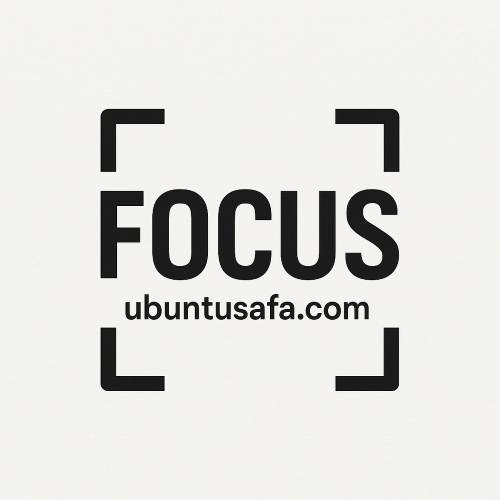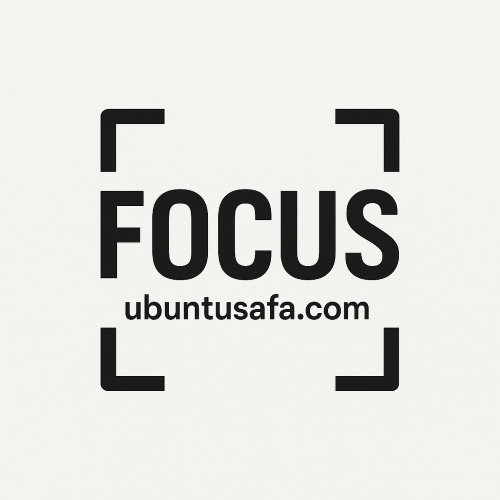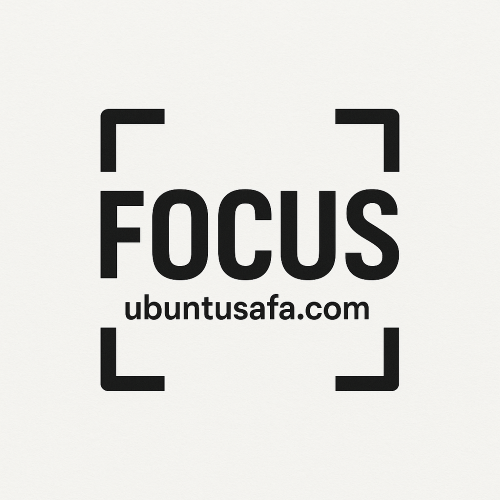Focus on South-Sudan:- How can South Sudan avoid becoming a playground for regional rivalries (Sudan, Uganda, Ethiopia, Kenya)?
South Sudan’s geostrategic location — bordering Sudan, Uganda, Ethiopia, Kenya, DRC, and CAR — gives it enormous potential but also makes it highly vulnerable to regional rivalries. Rival states often seek influence through security, economic, or political channels. Avoiding being a “playground” for these rivalries requires deliberate domestic, regional, and diplomatic strategies.
1. Strengthen Internal Governance and National Cohesion
Reduce factionalism: Implement reforms that move power-sharing from elite-centric deals to functional, transparent institutions.
Build inclusive institutions: Incorporate civil society, women, youth, and local communities into governance, so external actors cannot exploit domestic divisions.
Economic independence: Diversify the economy beyond oil, invest in agriculture, mining, and regional trade corridors to reduce dependence on foreign funding or subsidies.
Unified security forces: Integrate rival militias into a professional national army and police, reducing the leverage external actors can wield over armed factions.
Why it matters: Weak internal governance makes South Sudan ripe for external influence; strong cohesion reduces this vulnerability.
2. Balanced Regional Diplomacy
Multi-vector foreign policy: Avoid over-reliance on any single neighbor. Maintain diplomatic ties with Sudan, Uganda, Ethiopia, Kenya, and beyond.
Regional forums leverage: Actively use IGAD and AU mechanisms to mediate disputes and resolve cross-border tensions.
Strategic alliances without dependence: Negotiate mutually beneficial agreements on trade, energy, and security but preserve decision-making autonomy.
Example: Uganda has historically intervened militarily in South Sudan; balancing diplomacy with Kenya, Ethiopia, and Sudan reduces the perception that South Sudan is a proxy battleground.
3. Regional Trade and Economic Integration
EAC & AfCFTA participation: By embedding South Sudan in regional economic frameworks, its neighbors have incentives to support stability rather than intervene militarily.
Cross-border infrastructure: Shared roads, bridges, and ports create interdependence that discourages unilateral interference.
Diversified export routes: Reduce dependence on pipelines through Sudan by exploring options via Kenya (Lamu–Juba corridor) or Ethiopia, decreasing leverage from a single neighbor.
4. Conflict Prevention Mechanisms
Border management: Establish joint commissions for border security, resource disputes, and migration management.
Early warning & rapid response: Utilize IGAD’s and AU’s monitoring systems to prevent escalation of cross-border tensions.
Community-level peacebuilding: Invest in local reconciliation programs in border regions where ethnic groups span multiple countries.
5. Strategic Use of International Partners
UN and AU missions: Leverage peacekeeping, monitoring, and mediation to act as neutral buffers between South Sudan and regional interventions.
Targeted aid and development programs: Accept regional and international support in ways that build state capacity rather than fund factional elites.
6. Promote National Identity Over Ethnic/Regional Affiliations
Strengthen symbols of unity (language, education, civic initiatives) to reduce the likelihood that external actors can exploit internal divisions.
Encourage national media and civil society campaigns emphasizing “South Sudanese first,” decreasing susceptibility to external narratives.
Key Takeaways
Strategy and Goal
Internal cohesion & security reform- Limit domestic factional leverage for foreign actors.
Balanced diplomacy- Avoid dependence on any single neighbor
Regional trade integration- Align neighbor interests with South Sudan’s stability
Conflict prevention mechanisms- Reduce risk of cross-border escalation
International partnerships- Neutral buffers and development without elite capture
Nation-building- Reduce ethnic/tribal fractures exploited externally
Bottom line: South Sudan avoids becoming a playground for regional rivalries by strengthening its internal institutions, diversifying its economy, engaging multiple neighbors diplomatically, and embedding itself in regional trade and security frameworks.
South Sudan’s geostrategic location — bordering Sudan, Uganda, Ethiopia, Kenya, DRC, and CAR — gives it enormous potential but also makes it highly vulnerable to regional rivalries. Rival states often seek influence through security, economic, or political channels. Avoiding being a “playground” for these rivalries requires deliberate domestic, regional, and diplomatic strategies.
1. Strengthen Internal Governance and National Cohesion
Reduce factionalism: Implement reforms that move power-sharing from elite-centric deals to functional, transparent institutions.
Build inclusive institutions: Incorporate civil society, women, youth, and local communities into governance, so external actors cannot exploit domestic divisions.
Economic independence: Diversify the economy beyond oil, invest in agriculture, mining, and regional trade corridors to reduce dependence on foreign funding or subsidies.
Unified security forces: Integrate rival militias into a professional national army and police, reducing the leverage external actors can wield over armed factions.
Why it matters: Weak internal governance makes South Sudan ripe for external influence; strong cohesion reduces this vulnerability.
2. Balanced Regional Diplomacy
Multi-vector foreign policy: Avoid over-reliance on any single neighbor. Maintain diplomatic ties with Sudan, Uganda, Ethiopia, Kenya, and beyond.
Regional forums leverage: Actively use IGAD and AU mechanisms to mediate disputes and resolve cross-border tensions.
Strategic alliances without dependence: Negotiate mutually beneficial agreements on trade, energy, and security but preserve decision-making autonomy.
Example: Uganda has historically intervened militarily in South Sudan; balancing diplomacy with Kenya, Ethiopia, and Sudan reduces the perception that South Sudan is a proxy battleground.
3. Regional Trade and Economic Integration
EAC & AfCFTA participation: By embedding South Sudan in regional economic frameworks, its neighbors have incentives to support stability rather than intervene militarily.
Cross-border infrastructure: Shared roads, bridges, and ports create interdependence that discourages unilateral interference.
Diversified export routes: Reduce dependence on pipelines through Sudan by exploring options via Kenya (Lamu–Juba corridor) or Ethiopia, decreasing leverage from a single neighbor.
4. Conflict Prevention Mechanisms
Border management: Establish joint commissions for border security, resource disputes, and migration management.
Early warning & rapid response: Utilize IGAD’s and AU’s monitoring systems to prevent escalation of cross-border tensions.
Community-level peacebuilding: Invest in local reconciliation programs in border regions where ethnic groups span multiple countries.
5. Strategic Use of International Partners
UN and AU missions: Leverage peacekeeping, monitoring, and mediation to act as neutral buffers between South Sudan and regional interventions.
Targeted aid and development programs: Accept regional and international support in ways that build state capacity rather than fund factional elites.
6. Promote National Identity Over Ethnic/Regional Affiliations
Strengthen symbols of unity (language, education, civic initiatives) to reduce the likelihood that external actors can exploit internal divisions.
Encourage national media and civil society campaigns emphasizing “South Sudanese first,” decreasing susceptibility to external narratives.
Key Takeaways
Strategy and Goal
Internal cohesion & security reform- Limit domestic factional leverage for foreign actors.
Balanced diplomacy- Avoid dependence on any single neighbor
Regional trade integration- Align neighbor interests with South Sudan’s stability
Conflict prevention mechanisms- Reduce risk of cross-border escalation
International partnerships- Neutral buffers and development without elite capture
Nation-building- Reduce ethnic/tribal fractures exploited externally
Bottom line: South Sudan avoids becoming a playground for regional rivalries by strengthening its internal institutions, diversifying its economy, engaging multiple neighbors diplomatically, and embedding itself in regional trade and security frameworks.
Focus on South-Sudan:- How can South Sudan avoid becoming a playground for regional rivalries (Sudan, Uganda, Ethiopia, Kenya)?
South Sudan’s geostrategic location — bordering Sudan, Uganda, Ethiopia, Kenya, DRC, and CAR — gives it enormous potential but also makes it highly vulnerable to regional rivalries. Rival states often seek influence through security, economic, or political channels. Avoiding being a “playground” for these rivalries requires deliberate domestic, regional, and diplomatic strategies.
1. Strengthen Internal Governance and National Cohesion
Reduce factionalism: Implement reforms that move power-sharing from elite-centric deals to functional, transparent institutions.
Build inclusive institutions: Incorporate civil society, women, youth, and local communities into governance, so external actors cannot exploit domestic divisions.
Economic independence: Diversify the economy beyond oil, invest in agriculture, mining, and regional trade corridors to reduce dependence on foreign funding or subsidies.
Unified security forces: Integrate rival militias into a professional national army and police, reducing the leverage external actors can wield over armed factions.
Why it matters: Weak internal governance makes South Sudan ripe for external influence; strong cohesion reduces this vulnerability.
2. Balanced Regional Diplomacy
Multi-vector foreign policy: Avoid over-reliance on any single neighbor. Maintain diplomatic ties with Sudan, Uganda, Ethiopia, Kenya, and beyond.
Regional forums leverage: Actively use IGAD and AU mechanisms to mediate disputes and resolve cross-border tensions.
Strategic alliances without dependence: Negotiate mutually beneficial agreements on trade, energy, and security but preserve decision-making autonomy.
Example: Uganda has historically intervened militarily in South Sudan; balancing diplomacy with Kenya, Ethiopia, and Sudan reduces the perception that South Sudan is a proxy battleground.
3. Regional Trade and Economic Integration
EAC & AfCFTA participation: By embedding South Sudan in regional economic frameworks, its neighbors have incentives to support stability rather than intervene militarily.
Cross-border infrastructure: Shared roads, bridges, and ports create interdependence that discourages unilateral interference.
Diversified export routes: Reduce dependence on pipelines through Sudan by exploring options via Kenya (Lamu–Juba corridor) or Ethiopia, decreasing leverage from a single neighbor.
4. Conflict Prevention Mechanisms
Border management: Establish joint commissions for border security, resource disputes, and migration management.
Early warning & rapid response: Utilize IGAD’s and AU’s monitoring systems to prevent escalation of cross-border tensions.
Community-level peacebuilding: Invest in local reconciliation programs in border regions where ethnic groups span multiple countries.
5. Strategic Use of International Partners
UN and AU missions: Leverage peacekeeping, monitoring, and mediation to act as neutral buffers between South Sudan and regional interventions.
Targeted aid and development programs: Accept regional and international support in ways that build state capacity rather than fund factional elites.
6. Promote National Identity Over Ethnic/Regional Affiliations
Strengthen symbols of unity (language, education, civic initiatives) to reduce the likelihood that external actors can exploit internal divisions.
Encourage national media and civil society campaigns emphasizing “South Sudanese first,” decreasing susceptibility to external narratives.
Key Takeaways
Strategy and Goal
Internal cohesion & security reform- Limit domestic factional leverage for foreign actors.
Balanced diplomacy- Avoid dependence on any single neighbor
Regional trade integration- Align neighbor interests with South Sudan’s stability
Conflict prevention mechanisms- Reduce risk of cross-border escalation
International partnerships- Neutral buffers and development without elite capture
Nation-building- Reduce ethnic/tribal fractures exploited externally
Bottom line: South Sudan avoids becoming a playground for regional rivalries by strengthening its internal institutions, diversifying its economy, engaging multiple neighbors diplomatically, and embedding itself in regional trade and security frameworks.
0 Commentaires
0 Parts
1KB Vue
0 Aperçu










